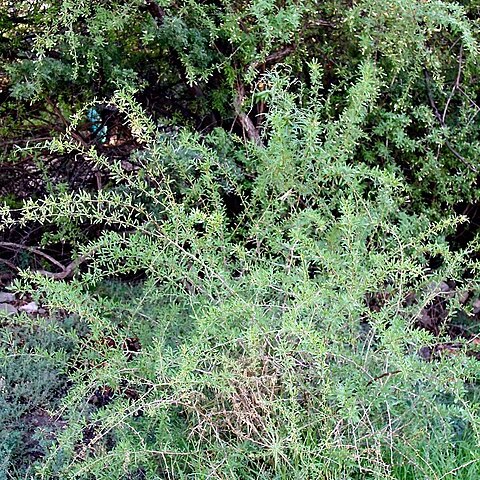Much-branched, thorny shrub or small tree, up to 3 m tall, branches curved. Leaves herbaceous to semi-succulent, solitary or in loose clusters, obovate to oblong-elliptic, 20-30(-50) mm long. Flowers bisexual, narrowly tubular, 20-24 mm long, creamy white with violet veins, lobes violet, spreading, calyx small. Berries red, ellipsoidal, 5-7 mm long.
Thorny shrub or small tree to 3 m. Leaves alternate and in tufts on short shoots, herbaceous or leathery, oblanceolate, 20-50 x 3-11 mm. Flowers bisexual, tubular, cream-coloured and purple, tube 15-24 mm with petals 2-3 mm long, stamens inserted ± halfway up tube, included or slightly exserted. Berries 5-6(-10) mm diam., red.
Shrub or occasionally small tree, up to 3-5 m high, with curved branches. Leaves narrowly obovate to oblong-elliptic, 20-30 mm long, herbaceous, glabrous. Flowers bisexual; calyx tubular, 3-5 mm long; corolla 20-24 mm long; nectary green, inconspicuous. Flowering time May-Oct. Fruit elliptic, red berry.
A thorny shrub. It grows 3 m tall. The leaves are alternate and in tufts on short shoots. They are 20-50 mm long by 3-11 mm wide. The flowers have both sexes. They are tube shaped and cream with the tube being purple. The fruit are oval red berries. They are 5-7 mm long by 3-5 mm wide.


